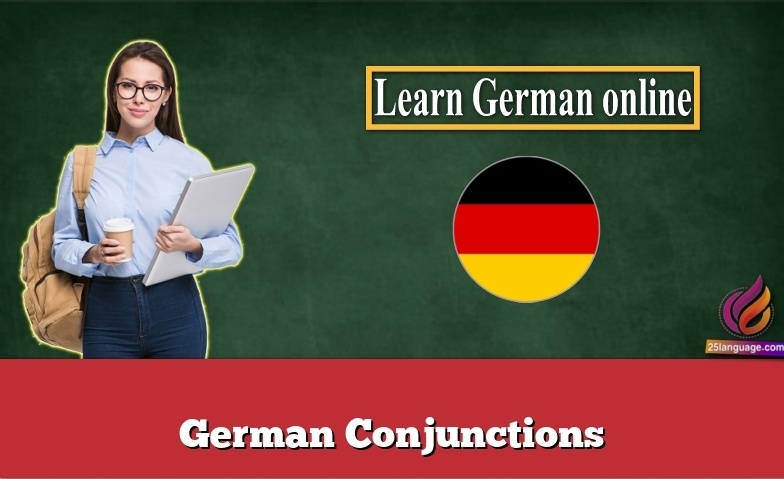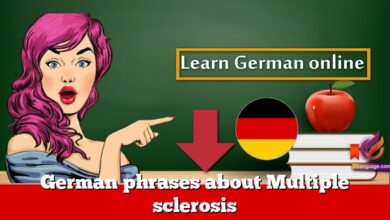German Conjunctions
How to Use 2 Types of German Conjunctions in Sentences

German conjunctions are also an essential part of the German language. Do you notice anything common in the sentences below?
“He was exhausted and he fell asleep in a minute.”
“I want to watch the movie, but I need to study right now.”
Yes, that’s correct ! Both the sentences are linked together by words like and or but. Such words are known as ‘conjunctions’. In this lesson, we will learn how and when to use different German conjunctions in sentences and how they affect the word order.
Types of German Conjunctions
As mentioned earlier, German conjunctions are words that connect two sentences. Without them, the sentences would be short and it would be next to impossible to construct complex statements. To convey your thoughts properly, it is important to know when to use which conjunction.
There are three types of conjunctions in German:- Subordinating conjunctions, Coordinating conjunctions and Two-part or Compound conjunctions.
Subordinating conjunctions affect the sentence structure. The verb goes at the end of the clause. You can learn more about these German conjunctions in our lesson on subordinate clauses.
In this lesson, you will learn everything about coordinate conjunctions and compound conjunctions in German. So without further ado, let’s dive in!
Coordinating Conjunctions in German
German coordinating conjunctions link two main clauses or independent sentences together. They do not affect the position of the verb. This means that the sentence structure is exactly the same as in a normal independent clause. The conjugated verb will be in the second position.
In short, these are the German conjunctions that do not change the word order. The word order will be as follows:-
Complex sentence = Main clause 1 + Main clause 2
Main clause 2 = Coordinating conjunction + Subject + Conjugated verb + …
As illustrated above, the conjunction is considered to be at zero position (Nullposition). Hence, next comes the subject (first position) and then the conjugated verb (second position).
The most important and commonly used coordinate conjunctions in German are as follows:-
| Conjunction | Meaning |
| aber | but |
| denn | because |
| oder | or |
| sondern | but / but rather |
| und | and |
| beziehungsweise | or precisely |
| doch / jedoch | however |
Take a look at some examples:-
- Das Wohnzimmer ist schön, aber zu dunkel. (The living room is lovely, but too dark.)
- Sie muss sich ausruhen, denn sie ist krank. (She must rest because she is ill.)
- Ich singe nicht gern, sondern tanze sehr gerne. (I don’t like to sing, but I like to dance.)
All A1 German Conjunctions
Compound or Two-part Conjunctions in German
Two-part conjunctions are known as zweiteilige Konnektoren in German. They are used to describe the correlations between two statements. It is essential to learn and remember these German conjunctions in pairs. The reason?
They always come in specific pairs and go hand in hand. This means that you cannot use just one in a sentence without the other. You have to use both of them. Most of the pairs do not affect the word order.
The most important and commonly used compound conjunctions in German are as follows:-
| Conjunction | Meaning |
| entweder … oder | either … or |
| weder … noch | neither … nor |
| sowohl … als auch | as well as / both … and |
| nicht nur … sondern auch | not only … but also |
| einerseits … andererseits | on the one hand … on the other hand |
| zwar … aber | indeed / it’s true … but |
| je … desto | the … the |
The first part of a two-part conjunction can be at different places in a sentence (at the beginning or in the middle), but the second part is always at the beginning of Clause 2. Take a look at some examples:-
- Victoria lernt sowohl Deutsch als auch Italienisch. (Victoria is learning both German and Italian.)
- Entweder gehen wir heute ins Theater, oder wir schauen uns diesen neuen Film an. (Either we go to the theater today or we watch this new film.)
- Ich trinke weder Kaffee noch Tee. (I drink neither coffee nor tea.)
je … desto (the … the)
This particular pair is slightly different. It affects the structure of the sentence. Je … desto is used to demonstrate a relationship between two comparative adjectives.
The first part je introduces a subordinate clause. This means that the verb goes at the end of the clause. The second part desto introduces a main clause and is at the beginning of the clause. The verb takes the second position.
You must be wondering why is it translated to ‘the … the’ in English. Take a look at the examples below to understand this weird translation:-
- Je mehr du Deutsch sprichst, desto fließender wirst du. (The more you speak German, the more fluent you become.)
- Je länger der Wein lagert, desto wertvoller wird er. (The longer the wine is stored, the more valuable it becomes.)




























